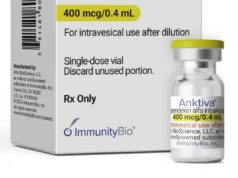More than 30 million Americans have been diagnosed with diabetes, making it one of the most prevalent conditions in the U.S. It’s also one of the most costly: As of 2017, the total estimated cost of diagnosed diabetes was $327 billion annually, including $237 billion in direct medical costs.
Not surprisingly, diabetes is common across Medicare Advantage (MA) plans, whose members are 65 and older — one in five Americans in this age group has been diagnosed with diabetes. Most MA plans have initiatives in place to address the three Part C diabetes measures that help ensure members get the care they need (eye exam, kidney disease monitoring and blood sugar monitoring). And while most plans perform well in at least one measure, few plans perform well in all three. No matter how a plan stacks up on these measures, there is always room for improvement.
Data seems to suggest that there are three best practices health plans can use to motivate members to complete the diabetic activities that are critical to their health.
Lesson No. 1: Prioritize the Activities for Members
Throughout the course of a given year, plans ask members to complete several healthcare activities. And while every activity is important, the ones that health plans prioritize first when communicating with members are the ones most likely for members to complete.
Given how much is spent annually on treating diabetes, it’s particularly important that plans prioritize these activities with members. Once these activities are prioritized more members complete their diabetic eye exam, kidney disease monitoring and blood sugar monitoring.
Lesson No. 2: Optimize Member Communications
Improving communication to members with diabetes is another area where health plans can focus:
- Communicate with members early and often. There is a “sweet spot” when it comes to engaging with consumers. Members with diabetes who receive at least five unique communications from their health plan complete more diabetic healthcare activities on average than members who received fewer communications.
- Explain the “why” behind each diabetic activity. Letting consumers know why they should do something is much more impactful than simply asking them to do it. You don’t need to use scare tactics, but you can still illustrate why a particular activity is important. For example, telling a member “It’s time for your diabetic eye exam” isn’t nearly as powerful as saying, “Diabetic eye exams are a way to monitor for diabetic retinopathy, a complication that can cause mild vision problems and eventually lead to blindness.”
- Communicate with members in more than one channel. As healthcare becomes more consumer-focused, members expect the same level and types of interaction with their health plans that they receive from other brands they engage with. An engagement strategy that includes a mix of email, text messages, and traditional mail reminders is much more effective than one that simply includes a repeated string of phone calls, for example.
Lesson No. 3: Fine-tune Rewards to Deliver Results
Most health plans offer their members incentives to complete various health activities, but what many fail to realize is different reward amounts are effective for different activities. NovuHealth regularly recommends optimized reward amounts for different activities to its health plan clients based on its experience working with millions of members over the past decade.
Some plans offer a $25 reward for every single healthcare activity, regardless of the barriers to completion and the value to the plan. But depending on these factors, some activities may require more than $25, and some may require less.
It’s intuitive that a larger reward leads to a higher percentage of members completing an activity, but this is where optimization is key. Plans that go too high with their rewards and incentives can see limited — or even negative — return on their investment, and end up spending more than they need to.
Health plans know that diabetes is a costly condition. And while most understand that engaging members and offering them rewards and incentives motivates more members to get care, it takes more than simply throwing money and member mailings at the issue. Plans that prioritize healthcare activities — in this case, those related to diabetes — and develop sound engagement and rewards strategies, stand the best chance of maximizing their ROI while helping get members the vital care they need.
Photo: filipefrazao, Getty Images








